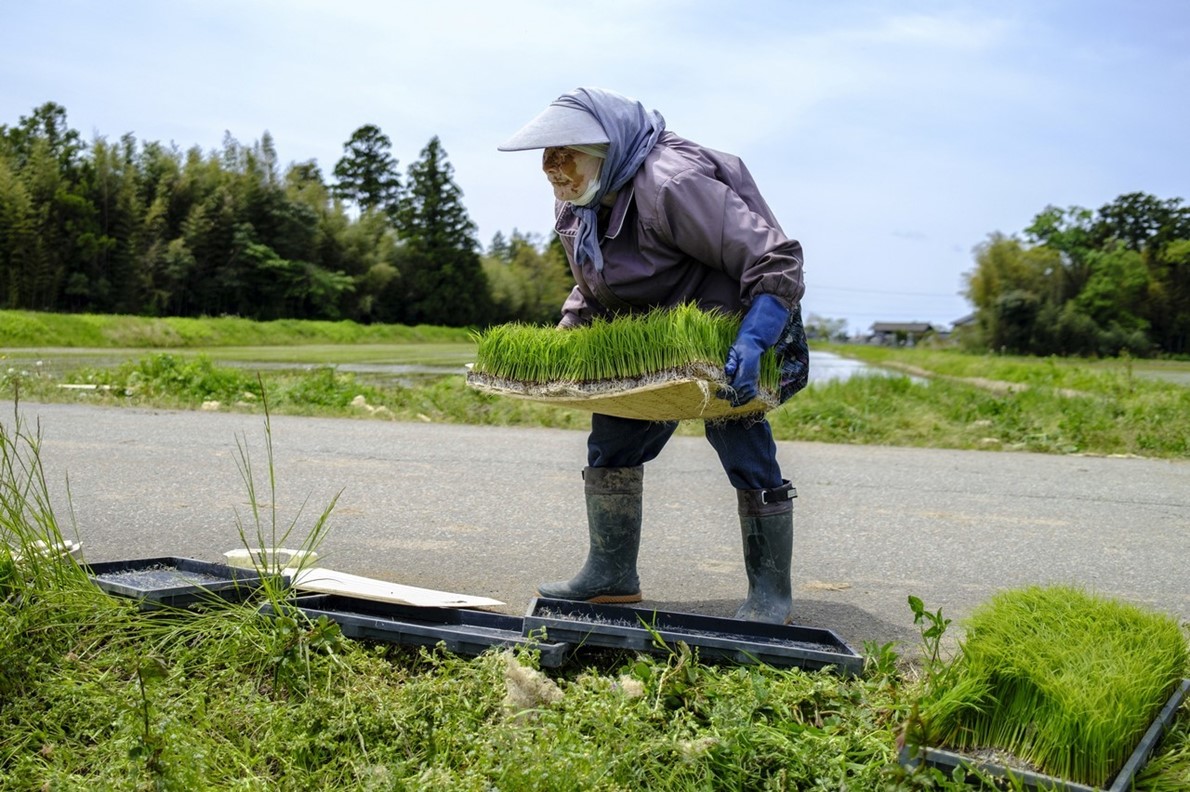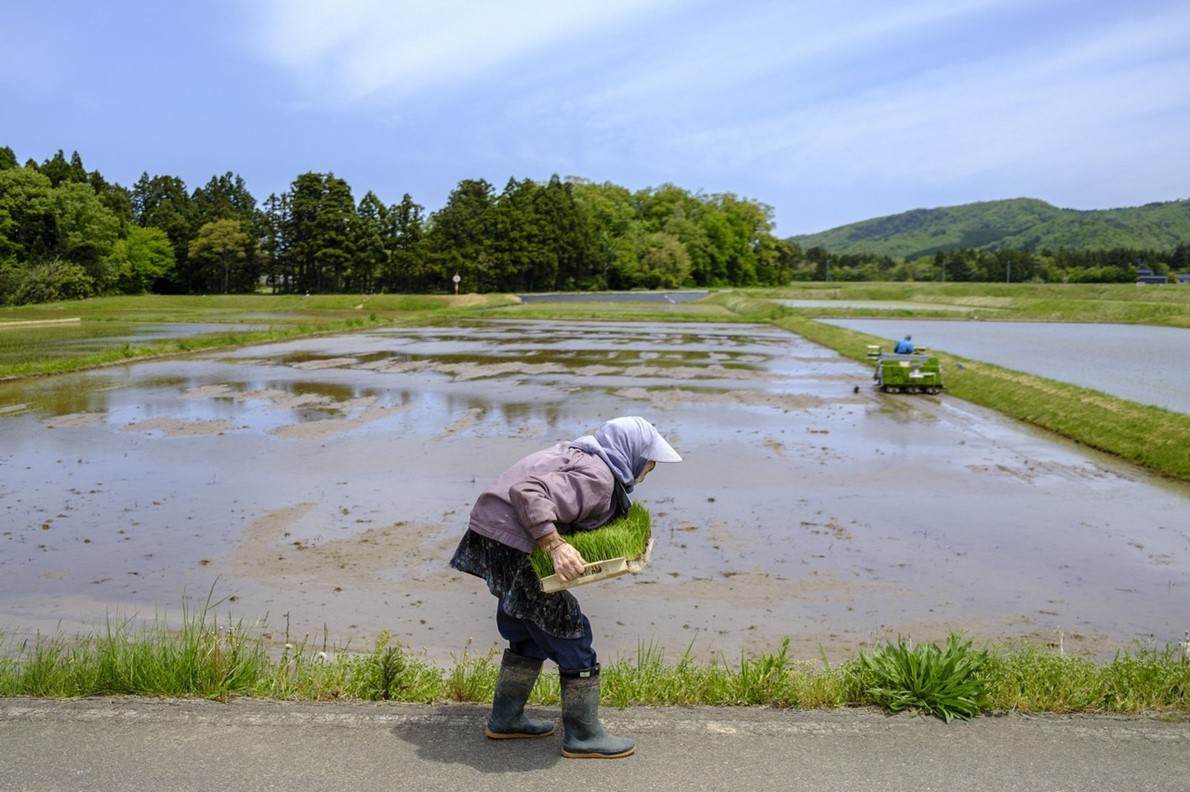SADO, Japan — Every day for the past 14
years, 72-year-old Masaoki Tsuchiya has set out before sunrise to search for a
bird rescued from extinction in
Japan.
اضافة اعلان
Starting his car under star-dotted skies unpolluted
by light, he works alone in the pre-dawn chill, marking sightings or absences
in a planner, interrupted only by the crackle of a walkie-talkie.
The bird he is looking for is called “toki” in
Japanese, and its presence on his home of Sado island is testament to a
remarkable conservation program.
In just under two decades, Japan’s population of
wild toki has gone from zero to nearly 500, all on Sado, where the bird’s
delicate pink plumage and distinctive curved beak now draw tourists.

It’s a rare conservation success story when one in
eight bird species globally are threatened with extinction, and involved
international diplomacy and an agricultural revolution on a small island off
Japan’s west coast.
A cautionary taleTsuchiya, stocky and spry
with an impish grin, does not eat breakfast until he has made all his stops,
and after years of practice he can spot chicks hidden in nests through the
monocular attached to his rolled-down car window.
He points to virtually imperceptible marks on a road
or a wall that help him remember where to park and start surveying.
“The number I see at this spot depends on the
season,” he explains.
Some days dozens of the birds appear in one area,
something unimaginable in 2003, when a toki called Kin or “gold” died in a cage
on Sado at the record-breaking age of 36.
Her death meant not a single wild-born toki was left
in Japan, despite the bird being so synonymous with the country that it is also
known as the Japanese crested ibis.
“I knew the day was coming. She was very old and
frail,” Tsuchiya said. “But it was still a real pity.”

Efforts to get Kin to mate with Sado’s last
wild-born male toki Midori — meaning “green” — had long since failed, and she
lived out her last years as a curiosity and a cautionary environmental tale.
Her death made national headlines and appeared to
mark the end of a long and seemingly futile battle to protect the toki in
Japan, where its feathers even inspire the word for peach pink: “toki-iro”.
But now so many roam the skies and rice paddies of
Sado that local officials have gone from discouraging eager birdwatchers to
training guides to help visitors spot the local icon, and the government is
even studying reintroducing the bird elsewhere.
Wiped outWild toki once lived across
Japan, as well as in
Russia,
Taiwan, and
South Korea.
They were considered a pest that damaged rice
plants, but during Japan’s Edo era, from 1603 to 1867, hunting restrictions
meant only high-ranking officials could actively pursue birds like toki.
That changed in the Meiji era and as guns became
more available. Toki meat was believed to have health benefits, and its
feathers were favored for everything from dusters to decorative flourishes on
hats.
“Over just 40 years, the toki basically
disappeared,” said Tsuchiya on an observation deck where visitors now try to
spot the bird.

By the early 1930s, only a few dozen toki remained
in Japan, mostly on Sado and the nearby Noto peninsula, and the species won
protected status.
A fresh threat then emerged during Japan’s post-war
drive for growth: rising use of chemical fertilizers and pesticides.
Toki feed primarily in rice paddies that mimic
marshy wetland habitats and they are undiscriminating diners, eating everything
from insects to small crabs and frogs.
The chemicals affected the birds and their food, and
by 1981 just five wild toki remained in Japan, all on Sado, where officials
took them into protective captivity.
But by bizarre coincidence, the same year a
population of seven wild toki was discovered in a remote area of
China’s
Shaanxi province, reviving hopes for the bird’s survival.
Sado’s captive birds failed to mate, but China’s
program had more success, and when then-Chinese president Jiang Zemin made a
historic first state visit in 1998 he offered Japan the gift of a pair of toki.
You You and Yang Yang arrived the following year on
first-class seats, producing their first chick months later in an event that
led national television broadcasts.
Other birds arrived from China, and with time Sado
had a large enough population to consider reintroducing the toki to the wild.
But first they had to tackle the use of chemical
fertilizers and pesticides on Sado.
“Back then people didn’t think about the environment
when farming. Their priorities were selling products at a high price and
harvesting as much as possible,” said Shinichiro Saito, a 60-year-old rice
farmer.
Farmers were asked to cut chemical fertilizers and
pesticides by half from the level allowed by local rules, but there was
pushback. Fewer chemicals meant smaller harvests, lost income, and more
weeding.
And some farmers couldn’t see the point of other
proposals like underground channels connecting rice fields to rivers to
increase the flow of aquatic life.
‘Toki-friendly’
Local officials used a carrot-and-stick approach, refusing to buy rice
from farmers who rejected the new chemical limits and creating a new premium
brand of “toki-friendly” rice for those who did.
But Saito, who was
an early adopter, said the real difference came when the first birds were
released in 2008.
“It was the toki
that changed their minds,” he said, with a lop-sided grin.
Even farmers
reluctant to adapt were “delighted” to see a bird with almost mythical status
on Sado wandering through their fields.
“This is a true
story. The toki was almost like an environmental ambassador, it helped create a
good environment for itself.”
Tsuchiya’s daily
rounds began with the 2008 release.
He has since
witnessed triumphs including the first wild-born chick, and the first chick
born to wild-born birds — moments he
describes with the proud anxiety of a parent sending a child off to school for
the first time.
He still runs his
own business, though the toki feather tucked into his car’s folding mirror makes
clear where his heart lies. And the breeding program has continued,
supplemented by birds from China that help broaden the gene pool.
Around 20 birds are
released twice a year after graduating from a three-month training program that
prepares them for life outside a cage. City officials even farm around the
birds to acquaint them with the sound.
When the first toki
were released on Sado, there were so many gaps in knowledge about the species
that volunteers analyzed their droppings to find out what the birds were
eating.
There were
missteps: officials prepared a remote mountain location for the release,
believing the birds would prefer seclusion, but the toki instead flew down to
fields that were frequented by farmers.
Tomoki Tsuchiya,
who works with Sado’s local government to make the island toki-friendly, said
his interest in toki was fostered by his father, Masaoki. But it is a
fascination shared by many on Sado, where the bird is rendered in cute mascot
form on everything from T-shirts to milk cartons.
“How can I express
it? The toki is so important for people on Sado,” the 42-year-old said.
“It’s like family.”
Read more Trending
Jordan News



